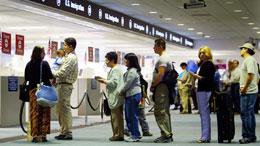India leads the way in immigration to Canada

Prior to the start of coronavirus lockdowns in Canada and around the world in mid-March, Canada was continuing to welcome high levels of immigration, reports CICnews.com.
In fact, just days before lockdowns in Canada, the country’s immigration minister announced a new ambitious plan to welcome over 1 million new permanent residents between 2020-2022.
While Canada’s immigration system has since faced interruptions, the country is processing immigration applications to the best of its ability.
New data released by Immigration, Refugees and Citizenship Canada (IRCC) provides an early look at where Canada’s new immigrants were coming from in the early months of 2020.
Up until the end of April, Canada welcomed 74,000 new permanent residents.
As has been the case over the last few years, India remained the leading source country of Canada’s new permanent resident (PR) visa holders.
They accounted for 24 percent of new PRs in the first four months of 2020.
India is the leading source of Canada’s immigrants since many of its citizens speak English fluently and possess other key characteristics that help them become eligible for Canadian immigration such as having university and/or college credentials and professional work experience, CICNews.com said.
Many Indian immigrants also arrive in Canada from the U.S. since it can be difficult for H1-B visa holders to obtain permanent residence in the U.S.
The following comprise the top 10 source countries of the 74,000 people that gained PR in the first four months of 2020:
India, China, Philippines, USA, Nigeria, Pakistan, Syria, France, Iran and Brazil.
So far, immigration from China has been slightly higher in 2020 than in recent years. Chinese immigrants have accounted for nearly 10 percent of newcomers compared with 9 percent in 2019.
Filipino immigration to Canada has also remained fairly consistent (7 percent in 2020 compared with 8 percent in 2019).
As was the case in 2019, U.S. and Nigerian immigrants are rounding out the top 5. Immigrants from those countries have a major advantage in Canada’s immigration system due to their English-language proficiency, which accounts for a major component of the federal Express Entry system, Provincial Nominee Program (PNP), and other programs.
It remains to be seen how the COVID-19 pandemic will impact the source countries of immigrants to Canada during the rest of 2020, CICNews.com reported.
On the one hand, coronavirus-related disruptions are currently limiting the ability of new permanent residents to come to Canada from abroad. This may alter the distribution of immigrant source countries in the second half of the year.
On the other hand, there may prove to be little or no impact on Canada’s immigrant source countries. Reasons for this may include that individuals within Canada who receive PR later in 2020 are also from the same source countries, those abroad are eventually able to travel to Canada, and the new invitations to apply for permanent residence that have been issued since the start of the pandemic also go to nationals of these top source countries.
Despite the impacts of the travel restrictions, it is still in the interest of candidates to go ahead and submit their Express Entry profiles and immigration applications during the pandemic if they have the ability to do so.
Submitting a profile or application gives you a chance to receive an invitation to apply, or approval for permanent residence, and the chance to travel to Canada as soon as you are able to do so, CICnews.com reported.
Meanwhile, a report from the National Foundation for American Policy’s research shows that the share of Indian students in Canada more than doubled between the academic years 2016-’17 and 2018-’19.
Unlike America’s hardline approach, Canada’s policies have been incentivizing students. In June 2018, Immigration, Refugees and Citizenship Canada announced the Student Direct Stream for China, India, Vietnam, and the Philippines. Students from these four countries enrolled in any of the 1,400-plus designated learning institutes in Canada can fast-track their applications, as long as they pass English-language tests and prove they are financially stable.
While the US has suspended immigration due to coronavirus outbreak and is reconsidering the post-graduate work programme Optional Practical Training, Canada isn’t letting Covid-19 get in its way.
As of May 14, international students with valid study permits in Canada from before March 18 have been exempted from the travel restrictions contingent on passing health checks and following isolation protocols.
Not just students but even Indian working professionals have been flocking to Canada as Trump’s anti-immigration rhetoric builds up. Several Indian techies have been swapping Silicon Valley for the more immigrant-friendly neighbour.
“Canada is benefiting from a diversion of young Indian tech workers from US destinations, largely because of the challenges of obtaining and renewing H-1B visas and finding a reliable route to US permanent residence,” said Peter Rekai, founder of the Toronto-based immigration law firm Rekai LLP. The country even offers express entry for skilled immigrants.
Moreover, Canada allows permanent residents to apply for citizenship after six years. Indian permanent residents admitted into the country jumped up over 117% between fiscal years 2016 and 2019, National Foundation for American Policy found.









